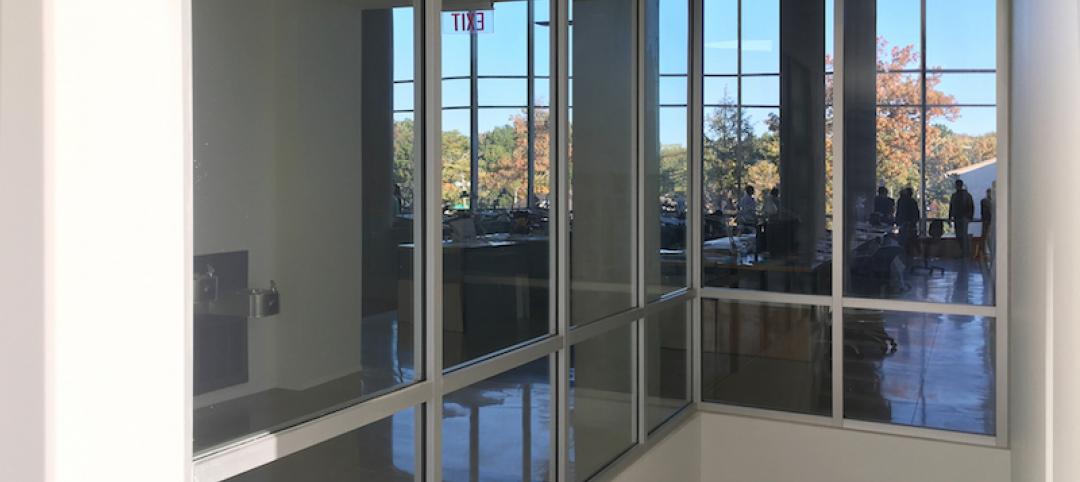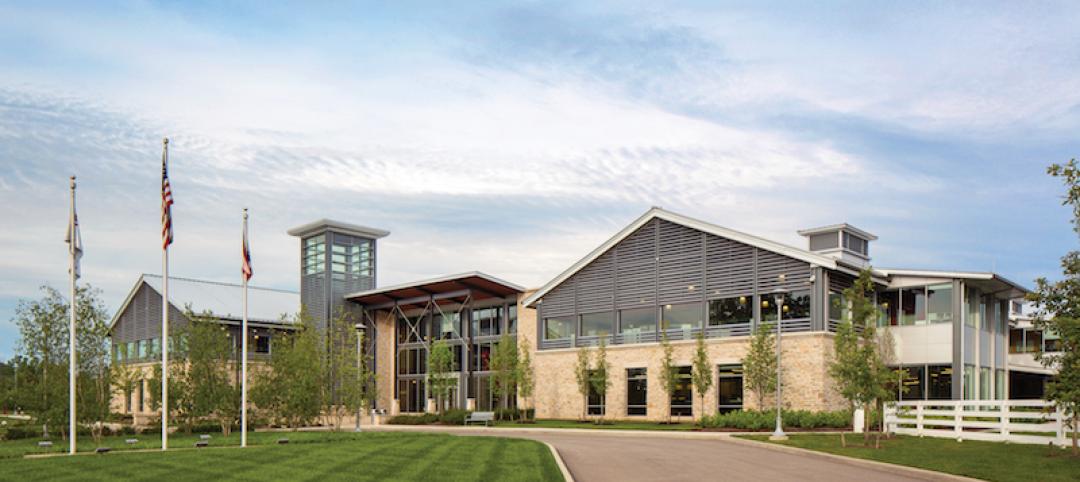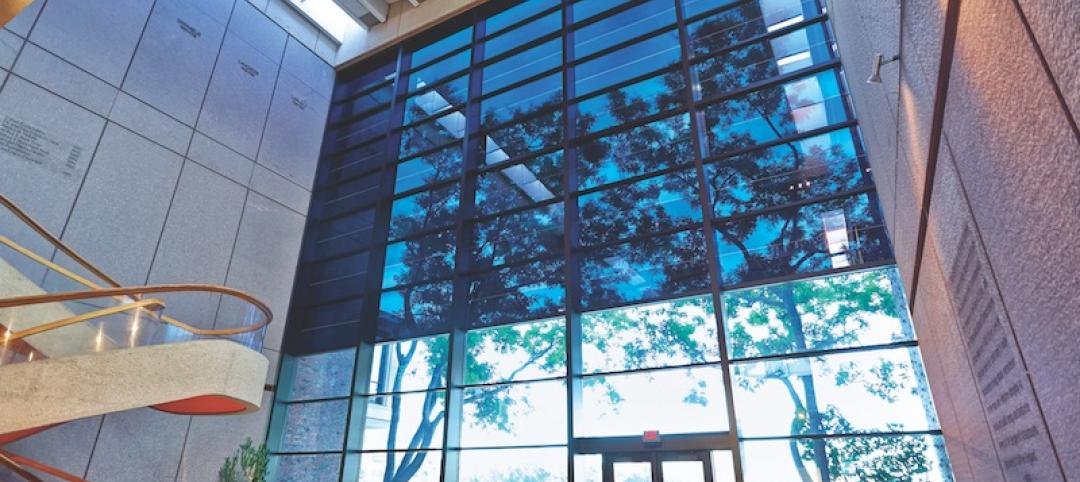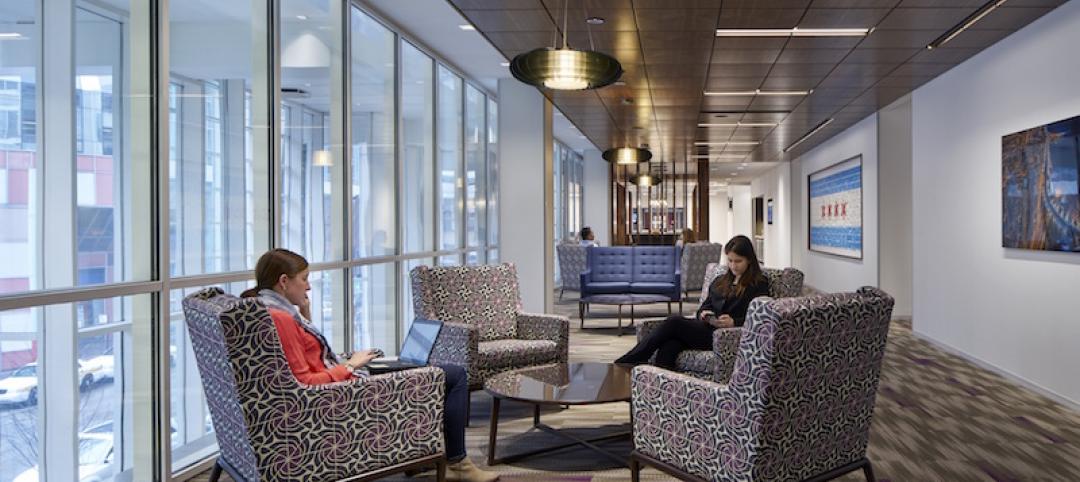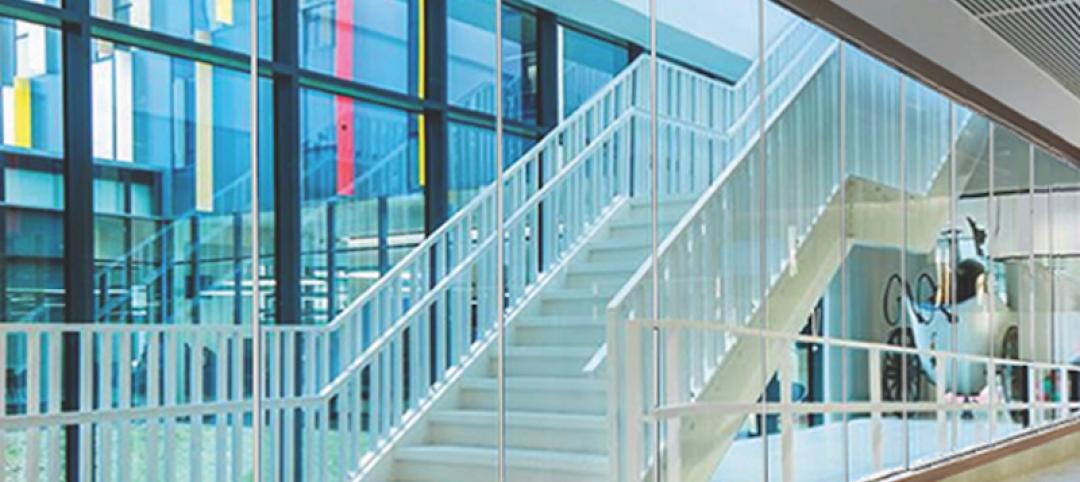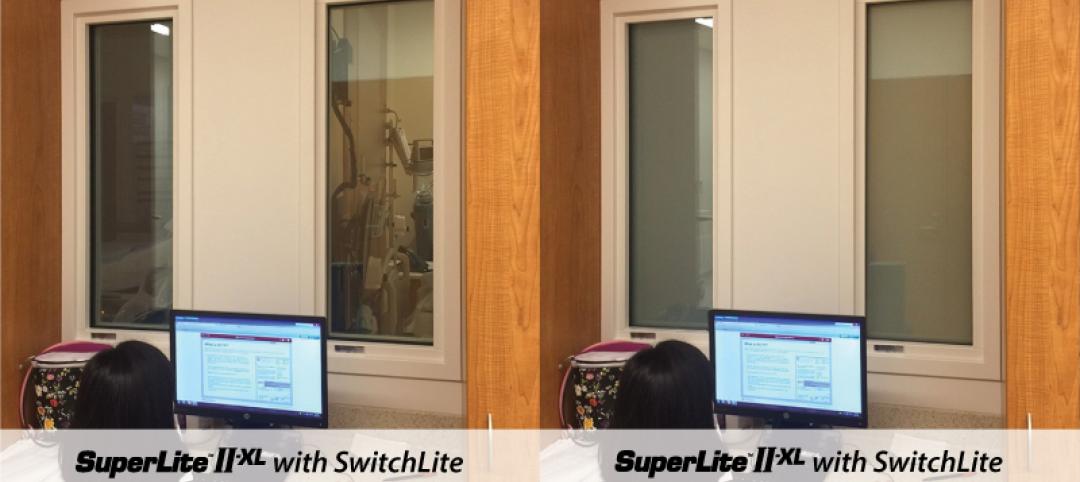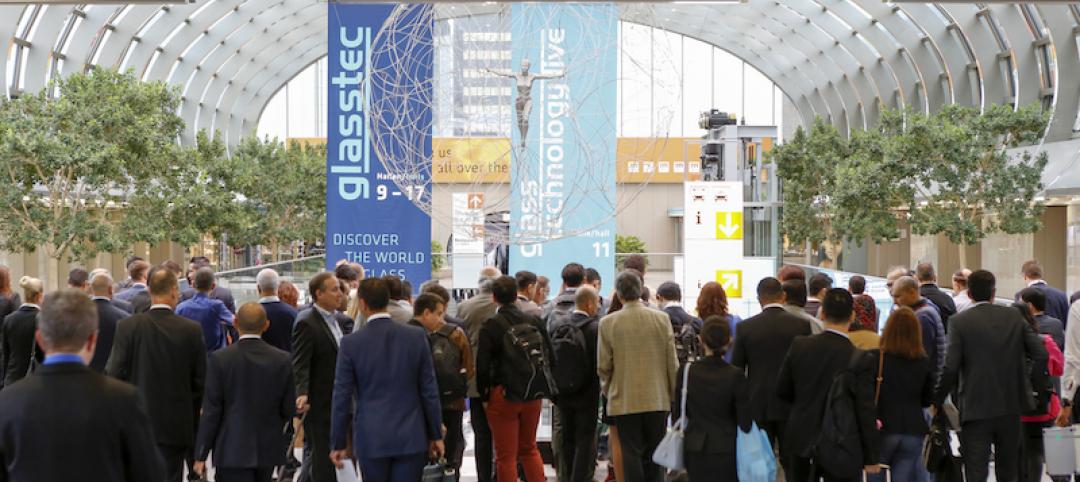The façade is one of the most important factors in shaping the overall aesthetics and performance of a building. At the same time, architects are under pressure to design building envelopes as quickly and inexpensively as possible. This is particularly true within the design-build delivery format. But it also applies to the traditional design-bid-build process, where innovative façade concepts can easily fall victim to value engineering.
How can architects ensure that a building envelope lives up to the aesthetic vision of the project while being cost-effective, high-performing, and quick to design, iterate and install? Understanding the following concepts can go a long way toward reaching a solution that works for everyone.
- Active client and team communication
- Early façade analysis and modeling
- Choosing a delivery approach
- Selecting the best wall system
- Finding cost savings
Active client and team communications
As clients and project teams meet during pre-design to discuss issues such as programming, sustainability, massing, and orientation, the building envelope isn’t always a top priority. Yet just because the façade isn’t a focus of these conversations doesn’t mean designers should ignore the envelope during the early stages of design. Teams often face the difficult task of conceptualizing the façade simultaneously to concurrently with the development of programming, MEP, and structural system selections.
 LEARNING OBJECTIVES:
LEARNING OBJECTIVES:
+ Discuss best practices for communicating and delivering façade designs to clients and partners.
+ Summarize the different types of building skins and how they relate to costs.
+ Understand the difference between design-build and design-assist delivery.
+ List the performance and analysis measures required for façades.
To earn 1.0 AIA learning units or 1.0 PDH, take the exam posted at BD+C University.
For this reason, it’s important for teams to develop multiple façade design placeholders that can be conveyed to the client as early in the design process as possible. These concepts can then be refined and transformed as more information becomes available.
Clear and open communication during this critical period streamlines what otherwise can be an unwieldy and complex process. This communication should be internal among the team and external with the client and other partners.
Internally, a design team must be on the same page when it comes to the technical and aesthetic aspects of a project and be prepared to quickly vet how design iterations would impact the performance and budget of the building skin. Externally, teams need to be clear about costs and performance and, most importantly, understand how the façade—like the rest of the building—will reflect the client’s mission and values. Questions to ask the client include:
- What are keywords that define your business or operation?
- Rank the following values in order of importance: aesthetics, energy performance, construction cost, maintenance and operations, and tenant demand/retention.
- What do you want people to feel and say upon seeing the building? What do you want people to feel and say when using the building?
Once the client’s vision and goals are understood, the team can begin the process of developing the design and analyzing how it will affect building use and performance. Follow-up communications with the client will require meetings about the façade’s impact on energy use, daylighting, comfort, glare, building size, and costs. While these discussions can lead to design modifications, early modeling and analysis can prevent teams from having to make drastic changes late in the design and documentation process.
Early façade analysis and modeling
Energy modeling, thermal bridging analysis, and dew point analysis can all be performed early in design to inform façade concepts and ensure they comply with the project’s technical requirements.

Energy modeling performed by the mechanical engineer will greatly influence the selection of materials, the mechanical system, and the overall requirements of the exterior enclosure. Energy modeling should begin during conceptual design, when results of the analysis can inform technical design parameters such as the ideal window-to-wall ratio (WWR)—the total vision surfaces of an exterior compared to its non-vision surfaces. Note: A building that appears to have an all-glass façade often is a combination of vision and non-vision exteriors.
If robust energy modeling is not started until later, projects run the risk of significant redesign and value engineering during design development and construction documentation. This will negatively affect pricing and the quality of the contract documents produced by the design team and design-build subcontractors.
Thermal bridging analysis, the conduction of energy through materials, can play a major role in façade design and material selection. As the exterior wall is being developed, technical issues around thermal bridging—R-values and U-values—can impact the design of the project. R-value is generally defined as the thermal resistance of a material or an individual component (i.e., how well it blocks heat loss). The U-value represents the thermal transmittance of an exterior wall, including all components (i.e., how well or poorly the assembly transmits heat from one environment—indoor/outdoor—to another). As a formula, R-value is the inverse of U-value (R = 1/U). Higher R-values and lower U-values represent higher levels of effective insulation.
The R-values of individual façade components are often compromised due to thermal bridging of metals and fasteners that can transfer heat or cold through the exterior enclosure. For example, R-19 insulation in the cavity of an exterior metal stud wall assembly with significant thermal bridges could reduce the effective R-value of the insulation to R-7. Consequently, if the target U-value for the exterior enclosure is R-30, the assembly may require five to six inches of exterior insulation to achieve the required energy performance. Having this information early in the design phases can greatly improve the quality of the technical documentation, minimize the risks of redesign and provide more certainty in the cost estimation process.

Dew point analysis tests a façade’s ability to reject harmful moisture and condensation. This analysis is important to conduct early to understand what will be required to safeguard the building from mold and material degradation. In conjunction with thermal bridging and energy modeling, dew point analysis can impact design direction, façade selection and performance, and the required technical documentation.
Choosing a delivery approach
Once a project moves from conceptual to schematic design, it’s time to consider how the façade will be designed and who will be responsible for its cost and delivery. For smaller projects, this can be performed in-house by the project design team. For larger and more complex projects, it’s often more cost-effective and expedient to work with outside experts through a design-build or design-assist partnership.
The design-build approach engages a façade subcontractor who is responsible for engineering the technical aspects of the design, providing documentation and ensuring its delivery and installation at a fixed cost. This method can be more efficient than the traditional design-bid-build process. That’s because the technical aspects and total cost of the façade (generally $90 to $250 but sometimes as high as $400 per square foot) are known early enough to allow the team to modify the design as the cost and technical requirements are reviewed.
The design-assist approach brings in an exterior wall subcontractor to assist the design team in developing and pricing the technical systems that will be put out for bid. It is important to note that design-assist requires the project team to complete a defensible façade design through the end of construction documentation. This is necessary because the façade sub who ultimately wins the project may have different technical solutions than those proposed by the design-assist subcontractor. It then becomes the project design team’s responsibility to ensure that the final technical solution adheres to the design intent, quality, sustainability, and construction requirements.
Selecting the best wall system
As just outlined, a subcontractor can help teams select the best technical system for a project. Even if a façade specialist is used, design teams need a general understanding of the three main types of building enclosures and their benefits and challenges.
- Unitized curtain walls are prefabricated enclosures that fasten to the face of the floor slab to create an exterior “curtain.” Unitized curtain walls can be glass, metal, or a combination of many materials. Unitized curtain walls have numerous advantages over other systems. They are manufactured off site in a controlled factory environment and tend to have a high build quality, better air and water control, and significantly simplified field installation. On the downside, the manufacturing process relies on economies of scale (the more units created, the less expensive they are to build) and may not be cost-effective for projects without large areas of repeatable units.

- Stick curtain walls are assembled on site and can provide a cost-effective alternative for unitized curtain walls. These façades have many of the aesthetic and technical performance benefits of unitized systems. However, field installation can be more time-consuming and quality levels can fluctuate due to the need for several disparate subs required for the final field installation. These are typically used on smaller, low-rise projects.

- Window walls, unlike curtain walls, do not hang on the side of the building. These systems sit on top of the structural slab between floors and can be installed from the exterior or interior. While window walls are often less expensive than curtain wall systems, they have drawbacks. Compared to curtain walls, window walls can require multiple field installation steps and trades: iron workers, sealant installers, glazers, water proofers, and insulation installers. It also can be difficult for these systems to meet energy code requirements due to the reduced space for insulation between the face of the system and the face of the slab edge.
Finding cost savings
Most projects succumb to some measure of value engineering. When it comes to façades, the following design decisions can affect cost.
Clear glass vs. low-iron glass—Clear glass can be a misnomer. When viewed from its cut side, clear glass is actually green due to its iron oxide content. Spread across the entirety of a large façade, clear glass can have a slight greenish tint. For this reason, designers often choose low-iron glass, which is more transparent but also more expensive. Samples should be obtained with standard clear glass and low-iron glass to see the differences.
Fins vs. no fins—Building fins can benefit a building’s energy performance as a shading device and its aesthetics as an architectural element. For performance purposes, however, fins must be thoroughly analyzed to ensure their depth and location provide adequate shading to reduce energy use.
Shadow boxes vs. spandrel glass—Non-vision (spandrel) sections of a building enclosure can use shadow boxes or spandrel glass to create a uniform “all window” look along the exterior. Glass shadow boxes are often the first choice of designers, as they provide depth and variegation that mimic the vision sections of the façade. This same general look, however, can be accomplished with spandrel glass (glass-coated with a ceramic frit) that does not require the additional cavity space of shadow boxes and is usually much less expensive.
Shadow boxes need to be approached with caution and a thorough understanding of the issues, particularly when it comes to dealing with the cavity. Non-vented shadow boxes can have condensation problems if not properly sealed. Vented shadow box cavities can allow dust and dirt to enter the cavity.

Floor-to-floor and ceiling height reduction—The choice of the building’s MEP and structural systems can also impact the overall cost of the building enclosure. Systems that increase floor-to-floor ceiling height may also raise the overall height of the building and increase the total square footage of the exterior enclosure. For this reason, design teams should evaluate the interplay of these different systems and their impact on building height to ensure that the system is cost-effective for other components of the building, such as the façade.
Final takeaways
Ensuring an exterior enclosure meets the aesthetic and sustainability performance goals of a building requires project teams to consider the exterior from the outset of design. Design teams should establish open, early, and frequent communication channels with the client, contractor, and subcontractors and continue this approach during the entire selection, documentation, and installation of the façade. By continuously analyzing and testing the design, teams can ensure that the façade meets the client’s performance and cost expectations.
About the Author
David Frey, AIA, LEED BD+C, DBIA, NCARB, is the Technical Principal in HOK’s West Coast practice and a member of the firm’s Technical Board and Exterior Wall Knowledge group. He is an expert in the design of high-performance building façades and innovative delivery methods. Frey has designed complex skins for buildings around the world.
Special thanks to Victoria Ereskina, LEED GA, WELL AP, Assoc. AIA, EIT, Facades Design Professional in HOK’s New York studio, and Sean Quinn, Sustainable Design Director for HOK’s San Francisco studio, for providing illustrations for this article, and to Stephen Weinryb, FAIA, LEED AP, Technical Principal in HOK’s New York studio, for his input and review.
Related Stories
Sponsored | Fire-Rated Products | Mar 22, 2017
Fire resistive glazing systems provide architects, owners and envelope consultants assurance of documented performance
It may look like a regular window, but these advanced fire resistive glazing systems are recognized in the code as transparent walls because of its ability to block smoke, flames and significantly limit the passage of dangerous radiant heat.
Sponsored | Glass and Glazing | Mar 16, 2017
Fire resistive transparent walls transform stairwells and exits to inviting, light-filled spaces
To preserve the building’s open design and to extend natural light further in the building, the architects incorporated fire resistive glazing in the areas that required a 2-hour fire rating, particularly in the stairwells and exit passageways.
Sponsored | Glass and Glazing | Feb 15, 2017
Down on the farm. Up on sustainability.
At first glance, it might seem like a barn—but a closer look reveals towering windows, rooftop solar panels and world-class energy efficiency.
Sponsored | Glass and Glazing | Jan 3, 2017
What’s in a name? A lot, actually
Our mission is to produce appealing architectural products that protect people while providing our customers with expert information, economical solutions, and unlimited inspiration.
75 Top Building Products | Dec 12, 2016
101 Top Products: Glass+Glazing
Among the best glass+glazing products included in BD+C's inaugural Top 101 Products report are Guardian Industries SunGuard SNX 51/23, Modernfold’s Acousti-Clear, and SageGlass’s Electrochromic Glass.
Sponsored | | Nov 10, 2016
Fire-rated glazing replaces drywall partition to transform ‘almost unusable’ space into a ‘showstopper’
The space, which the firm hoped to use as a gathering place for employees and clients, had no access to daylight.
Sponsored | Fire-Rated Products | Nov 10, 2016
Truly transparent: Fire resistive butt-glazed walls up to 2 hours
SuperLite II-XLM is a fire resistive multi-laminate glass product that meets ASTM E-119/UL 263/NFPA 251 and CAN/ULC S101 up to 2 hours.
Sponsored | Fire-Rated Products | Nov 3, 2016
Fire rated switchable glass provides privacy and fire protection at the University of Chicago Medical Center
The University of Chicago Hospital Group reached out to Bill Zientarski of Hi-Performance Glazing Solutions and SAFTI FIRST’s architectural representative in Illinois for a solution that combined vision, privacy and fire protection in one glazed unit.
Sponsored | Glass and Glazing | Oct 14, 2016
International glazing community celebrates innovation at the Glasstec show in Dusseldof
With 9 exhibition halls showcasing over 1,235 exhibitors from 52 countries and with over 40,000 visitors from 100 countries walking the show, it is still regarded as the leading international trade fair for the glass industry.
Glass and Glazing | Aug 22, 2016
Tianmen Mountain glass skywalk opens to the public
Acrophobics beware: China’s Zhangjiajie National Forest Park just got a little bit (or a lot) more terrifying.


![Façade design for cost, performance, and delivery [AIA course] Façade design for cost, performance, and delivery [AIA course]](/sites/default/files/Fac%CC%A7ade%20design%20for%20cost%2C%20performance%2C%20and%20delivery.jpg)

